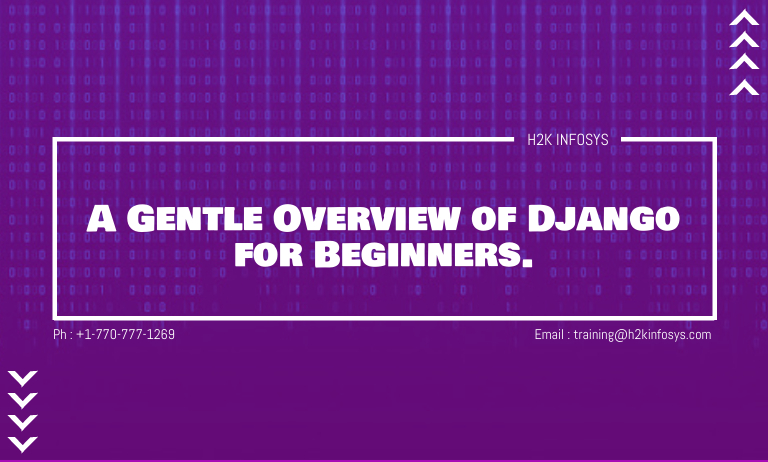Django is one of the most popular web frameworks for web development. If you don’t know what a web framework is, a web framework is a code library used to build web applications that include web resources, web services, and API. Working with a web framework is advantageous as web applications can be made quickly in a flexible, maintainable, and scalable manner.
There are numerous frameworks for different programming languages. Examples include:
- CakePHP, Horde, Laravel for PHP
- Ruby on Rails, Sinatra for Ruby
- Angular.js, React.js, Express.js for Javascript
- Flask and, of course, Django for Python
In this tutorial, we will give Django a gentle introduction and all you need to know as a beginner. Specifically, you will learn.
What is Django
Django is a web framework for developing web services, web APIs, and web applications in general. It has standard methods and functions that can expedite web development and in an effective manner. Beyond assisting you in building web applications, you can also manage and maintain your web applications in a less tasking approach.
Why you should choose Django
Django has some key advantages as a web framework. They include:
- Ease of setting up: Django offers you a variety of option to get you started without hassles
- Its interface is user friendly for different administrative operations.
- Django has an inbuilt internationalization system that allows you to build a multilingual website.
- Django helps you meet the traffic demand on your website even if it increases massively.
- Django is used for many content management systems, scientific computing platforms, and social networks.
- Django allows you to carry out end-to-end testing on your web application.
- There are good throttling and admission policies.
- Django assists you in documenting your API with an HTML output.
Drawbacks of Django
- Django is a heavily monolithic tool. This means that project deployment has to be all at once or not at all.
- Multiple requests cannot be handled simultaneously.
- The need to understand Programming to some extent to get started with Django
- Web applications in Django are tightly-coupled.
History of Django
Django was developed in 2003 by Lawrence journal world. In 2005, it was released to the public under the BSD license. Since July 2005, when the first version was released, Django has rolled out different other versions, Now the latest version is Django 3.1.6. Meanwhile, Django 3.2 is in development. Let’s do a rundown of the significant improvement in Django from inception to date.
- July 2005: Django was made public
- September 2008: Version 1.0 was released, which had a stable API and an array of unattached admins
- July 2009: Version 1.1 supported aggregates ad test based on transaction
- May 2010: Version 1.2 supported multiple database connection and model validation
- March 2011: Version 1.3 allowed views based on class, alongside static files
- March 2012: Version 1.4 introduced the use of time zones, templates for an app, and in browsing tests
- February 2013: Version 1.5 was upgraded to support Python 3
- November 2013: Version 1.6 supported database transaction management, reusable connections
- September 2014: Version 1.7 allowed application loading, migrations as well as configurations
- April 2015: Version 1.8 natively supported multiple template engines
- December 2015: Version 1.9 had passwords automatically validated.
- August 2016: Version 1.10 allowed complete text search for PostgreSQL
- April 2017: Version 1.11 was announced to be the last version to support Python 2.7
- December 2017: Version 2.0 had a simpler syntax for URL routing and a mobile-friendly admin
- August 2018: Version 2.1 supported ‘view’ permission for models
- April 2019: Version 2.2 was a security release
- December 2019: Version 3.0 supported ASGI
- August 2020: Version 3.1 supported asynchronous views and middleware
Features of Django
- Django is a python web application framework.
- It has robust documentation, arguably one of the best for any open source technology.
- Django built applications are highly scalable.
- Django provides top-notch security for your application.
- Web applications built with Django are Search Engine Optimized.
- Has great feature for quick web development
- Supports end-to-end testing
- Its OOP database is excellent for storing and retrieving data.
- Development in Django requires less code and are effective.
The Architecture of Django
Django has two overall architecture: MVC and MVT. Let’s discuss each of them.
- Model view controller (MVC): MVC is the architect used to build UI applications (either web or desktop). It performs UI operations and focuses on separating data depiction from the component’s interfaces. It can be divided into three components:
- Model: This is the primary component of the architecture. It manages the data structure and interfaces with all other constraints, including querying the database.
- View: This is used to display the data and return the HTTP request
- Controller: This component deals with user interaction and renders the views
- Model View Template (MVT): This architecture works almost like the MVC. Only that in MVT, the controller component is done by the Django framework itself.
- The Model and View component do the same tasks as in MVC.
- Template: The template is the component that represents the layer. They are simply a chunk of HTML doing the data rendering.
Components of Django
- Form
Django has a robust library dedicated to creating forms. The form library renders the document in HTML, validates the form filled, and converts the data into Python data types.
- Authentication
This company deals with managing user account, user login sessions, groups, etc.
- Admin
This scraps critical metadata in your application and gives a great UI to manage your websites’ contents.
- Internationalization
These components allow you to build websites that can be translated into different languages. Furthermore, it handles time zone differences, currencies, date formats based on location, etc
- Security
Django guards you against attacks such as SQL injection, Cross-Site Request Forgery (CSRF), clickjacking, remote execution of codes, etc.
Famous Companies that Uses Django
Many famous companies make use of Django. Some of them include
- Bitbucket
- Robinhood
- NASA
- Mozilla
- New York Times
- The Washington Post
- DISQUS
- Discovery Channel
- Accenture
You now have a general overview of Django. It is an excellent framework for building web applications, web resources, and APIs right away. Django developers are very much in demand. As seen, top companies use the framework to develop their applications. If you’ve got any questions, please leave them in the comment section, and I’d do my best to answer them.






























